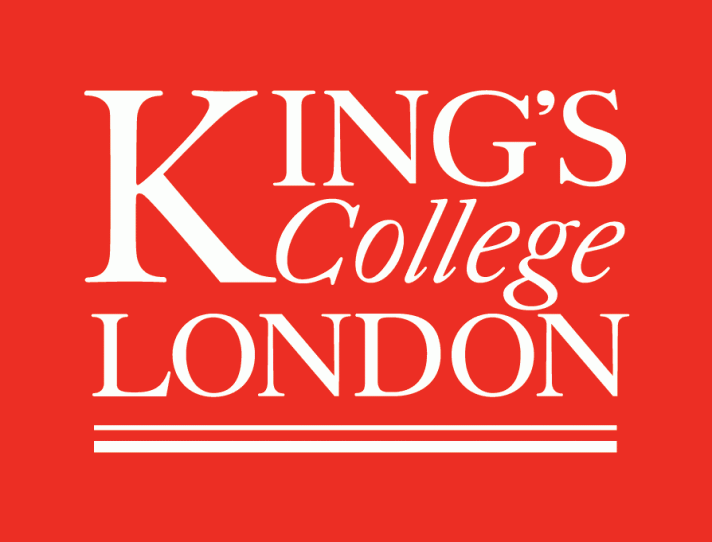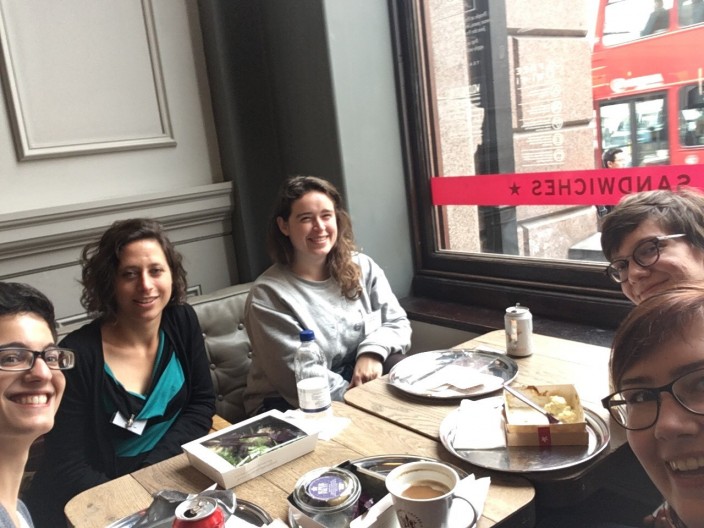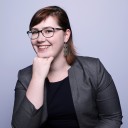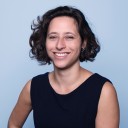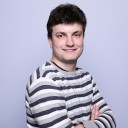On Friday 19 May 2017, we (Sytze, Eva and Jakub) attended our first conference in the context of the C²DH. We arranged the trip to King’s College London a few weeks in advance and after overcoming Murphy’s law we managed to arrive at our apartment the night before the 'New Perspectives in Digital Humanities Conference'. In the morning, we arrived quite early and enjoyed a small breakfast before the crowd started to arrive. At 9 a.m. professor Allan Blackwell, specialised in interdisciplinary design introduced the history and fields involved in visual representation. Outlining the history of technology through a combination of inventions, philosophical theorists and certain institutions such as the mathematical laboratory of Cambridge, structuring his presentation as a web of interconnected fields of interest. At the start of his presentation he discussed the work at the mathematical laboratory of Cambridge in the 1940s, showing women working on the machine with the men standing in front of the machine ‘taking credit for women’s work’. In addition, he showed the usage of syllogism in terms of manipulation of language (text) processing devices. Furthermore, the audience got acquainted with famous historical figures in physics and computer science (e.g. Leonhard Euler, George Boole, Claude Shannon, Douglas Engelbart…). Their inventions were shortly outlined to explain the current scientific visualisations. The key message, or question to be more precise, is to consider who gets to be creative in the development of new technology: designer or use?
After a brief introduction on the work being performed in Digital Humanities at the university of King’s College by professor Evelyn Welch stressing the key role of Digital Humanities in understanding the data, there were two parallel sessions of short paper presentations. Sytze attended the Tools Presentation where the third year PhD student Sam Cottrell presented his work on visualising archive metadata focussing on the registration of inventions at the National Archive. His example combining a map visualisation with a stacked bar chart to display evolution over time offered great inspiration on what is possible using the google geocoder API.
Furthermore, he discussed uncertainty at every stage of the visualisation pipeline from the acquisition of data over filtering and mapping, to rendering. Uncertainty can be linked to both space and time, for example in mapping places that don’t exist anymore. One way to display this uncertainty is by colour coding uncertainty based on the confidence score of google geocoder and manually checking places with a low fidelity score.
Eva and Jakub attended the other session where two more speakers outlined their work. One lecture in particular proved very interesting, although not that practical for analysing our own sources. Richard A. Carter talked about how you can not only analyse data, but also can create with data, as the photograph below shows. In his research he encodes poems, showing us how machines see language via a graphical representation consisting of geometrical shapes and patterns.
In between presentations we practiced our ‘networking’ skills as encouraged by dr. Ariana Ferreira Loff at the first Brown Bag Lunch for PhD students at the University of Luxembourg. We met up with some students from the master program and had very interesting conversations at lunch.
In the afternoon, there were two parallel workshop sessions. The workshop on storytelling with diverse datasets by Peter Graham briefly introduced some visualisation tools such as infogr.am, piktochart, D3.js, Tableau, Plotly, Highcharts, Periscope data and IBM Watson. Even though these commercial tools are not designed for academia specifically, the fact that these companies are highly competitive assures continued development and compatibility with the newest technology. Although the workshop didn’t go into details on the tools he suggested, the basic context to take into account in storytelling was nicely outlined in his presentations. He asked us to think about the audience we address, the content we want to display, whether we are exploring or explaining the data, the communication medium, and the tone or key message of our presentation. The parallel workshop about Visualising Cultural Datasets given by Everardo Reyes was attended by Eva, where Reyes outlined different tools for visualising data such as wordclouds, Voyant Tools, RawGraphs or software for network analysis such as Gephi. These sorts of tools can give you a first impression about your data and can show you which paths you could explore further. Furthermore, it was very helpful to discuss different approaches to our projects within a team by creating a short presentation of our research. Working together, we could share our knowledge of various online tools even for textual analysis such as Voyant etc. In this way we also got in touch with other PhD students and academic researchers from King´s College of London.
Paolo Ciuccarelli, the founder of the Density Design Research lab at the Politecnico di Milano presented the closing keynote of the conference on what design can learn from Digital Humanities and noting that the collaboration of humanists and designers can create rewarding results and should be encouraged. He also urged the audience to consider the significance of uncertainty (in visualisations) and briefly described the sprint-approach to designing:
Monday – Unpack the problem
Tuesday – Sketch
Wednesday – Hypothesis
Thursday – Prototype
Friday – Testing
Afterwards we could talk to the other attendants at the reception and I also decided to give the conversation starter application a try and got to meet up with an assistant professor from the university of Granada and two more students I got to inspire in attending Digital Humanities masters.
